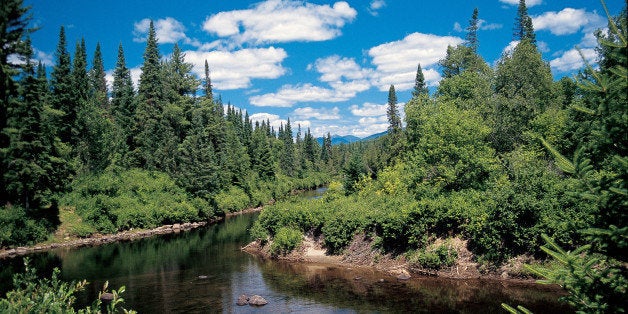
Household consumption drives 60 percent of economic activity globally. Yet too often, our consumption is synonymous with environmental and social degradation.
What if consumer purchases could create positive impacts for people and the planet? That would seem revolutionary. In fact, just such an endeavor exists today to protect forests, one of the most precious and vital ecosystems on earth, which support the livelihoods of 1.6 billion people around the world and 80 percent of terrestrial biodiversity.
From tissue and paper, to packaging, furniture and building materials, people consume and depend on forest products every day. While traditional, industrial forestry can destroy forests, there's a movement well underway to balance our immediate and long-term consumption needs while safeguarding forests, wildlife and forest-dependent communities. Known as the Forest Stewardship Council (FSC), the approach uses market forces tied to sustainable consumption to ensure forests are protected for the long term, even as they provide wood and fiber for products we use every day.
Here's how it works: FSC sets high standards for responsible management, to which forests around the world are independently audited. FSC standards are designed to protect a wide array of forest values, including old growth, biodiversity and rare species, water resources, native peoples, forest workers and local communities.
Products from forests that meet FSC standards can use the FSC label. Consumers and companies looking to have a positive environmental and social impact purchase products bearing this label, which sends a signal back to the forest owner, creating an incentive for more forests to be managed to FSC standards in a positive-feedback loop.
To date, 450 million acres (184 million hectares) of forest in 80 countries have earned FSC certification, with 29,500 companies trading in FSC-certified products. This represents more than 15 percent of the global trade in forest products, excluding wood for fuel.
As FSC has grown, many consumer-facing companies have taken note, and made it a part of their business and sustainability strategies.
Take Kimberly-Clark, for example. With products like Kleenex, Scott Tissues and Huggies, the company is one of the largest buyers of forest products in the world. Nearly one in four people globally purchase one of their products every day. With this reach comes a strong sense of corporate responsibility to do the right thing, including a deep commitment to FSC. In fact, every Kimberly-Clark tissue product in North America -- along with many others around the world -- is now FSC certified. This one company has had an enormous impact, by creating demand for responsibly managed forests and by raising expectations for their entire industry.
Research demonstrates that FSC yields benefits for people and forests. For example, CIFOR, a nonprofit research organization, found that FSC certification in Africa's Congo Basin has been able to push logging companies toward "remarkable social progress." And the World Wildlife Fund has found that FSC helps protect biodiversity and reduce forest degradation compared to industrial forest practices. WWF even found that FSC can be more effective in halting environmental destruction than protected areas, such as national parks, in countries where law enforcement is weak.
Recognizing FSC's success with the forest-products industry, other sectors are applying the model to a growing array of consumer goods derived from agriculture (Sustainable Agriculture Network), minerals (Initiative for Responsible Mining Assurance) and seafood (Marine Stewardship Council). While details vary, each of these systems aligns with FSC's premise that responsible consumption can yield positive environmental and social outcomes.
Embedded within the UN Sustainable Development Goal 12 to "ensure sustainable consumption and production patterns," are objectives to achieve sustainable management of natural resources, encourage large companies to adopt sustainable practices, and promote sustainable public procurement. While the overall goals are appropriately ambitious, given the scale of the challenges we face, these objectives are well within our reach today. In fact, the Forest Stewardship Council provides a model that allows us to "meet the needs of the present without compromising the ability of future generations to meet their own needs."
As the world moves toward sustainable consumption and production, FSC represents a model for others to consider. And since forest products are so ubiquitous, FSC offers consumers a simple action with a profound impact, one that they can take the next time they shop at their favorite retailer. Through responsible consumption, we all have an opportunity to embrace FSC's promise of "forests for all forever."
This post is part of a series produced by The Huffington Post, "What's Working: Sustainable Development Goals," in conjunction with the United Nations' Sustainable Development Goals (SDGs). The proposed set of milestones will be the subject of discussion at the UN General Assembly meeting on Sept. 25-27, 2015 in New York. The goals, which will replace the UN's Millennium Development Goals (2000-2015), cover 17 key areas of development -- including poverty, hunger, health, education, and gender equality, among many others. As part of The Huffington Post's commitment to solutions-oriented journalism, this What's Working SDG blog series will focus on one goal every weekday in September. This post addresses Goal 12.